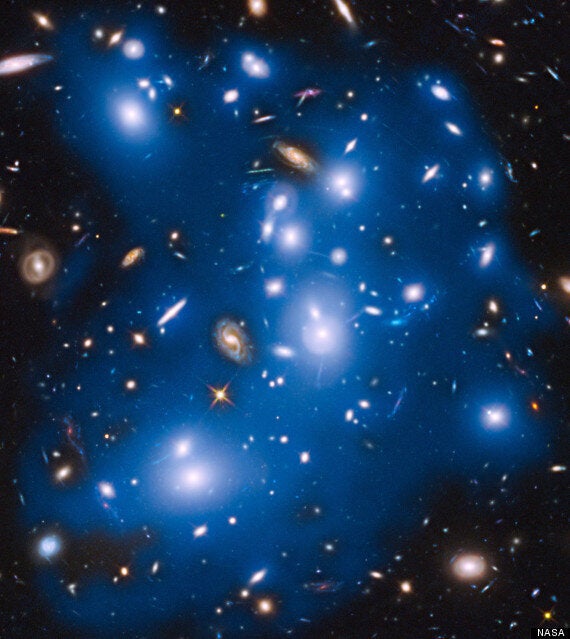NASA and ESA's Hubble Space Telescope has seen some amazing things in the sky since it was launched in 1990.
Until now it hadn't actually seen any ghosts.
Scientists have reported the discovery of light from galaxies which were thought to have been torn apart by gravity in the universe's distant past.

Above: the blue light areas represent the faint glow of the 'dead' galaxies
The dead galaxies are located within an area known as 'Pandora's Cluster', or Abell 2744, where 500 galaxies once existed but were them destroyed by a catastrophic collision.
It didn't happen overnight - in fact it took more than 6 billion years to play out. And the stars within those galaxies were not destroyed but flung out into space.
And it's the light from these scattered stars that scientists have reported finding, after searching for three years.
The glow of the lost stars was very faint, and confirms that the galaxies were torn apart by tidal gravitational forces.
"The Hubble data revealing the ghost light are important steps forward in understanding the evolution of galaxy clusters," said Ignacio Trujillo of The Instituto de Astrofísica de Canarias (IAC), Santa Cruz de Tenerife, Spain. "It is also amazingly beautiful in that we found the telltale glow by utilizing Hubble's unique capabilities."
Nicknamed "phantom stars", they are said to be richer in heavy elements like oxygen, meaning they are probably second- or third-generation stars.
You can add this discovery to other Halloween-related discovered such as that of the Zombie Star and the Screaming Witch Head Nebula.